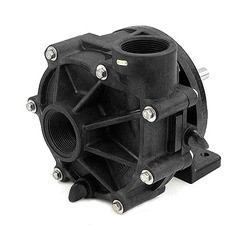
Why does PPO have to be ‘Modified’?
Polymer scientists worked out that the molecular stiffness of the backbone of a polymer chain was the key to increasing the glass transition temperature (Tg) and hence rigidity at elevated temperatures.
Then it was only a matter of time (1956) before they came up with the polyphenylene oxide (PPO). It certainly had a high Tg (over 200oC). However, the knock-on effect was a very high melt processing temperature. This was beyond the capabilities of injection moulding machines at that time.
Instead of going back and tinkering with the polymer structure to reduce the processing temperature, they took the more expedient solution of physically blending the PPO with an easier processing polymer. The PPO-polystyrene blend (‘Noryl’ from GE Plastics) was an instant success when introduced in 1960. The modified PPO had an attractive set of properties in addition to a high heat softening temperature. Its creep resistance, stability in boiling water, electrical resistance and low mould shrinkage made it a popular material for metal replacement parts in electrical and electronic components and in the automotive industry.
Today polyphenylene oxide is commercially available as tough blends with polyamides (‘Noryl GTX’) and with polypropylene (‘Noryl PPX’). The latest offering from Sabic Innovative Plastics is a flexible blend of PPO with a thermoplastic elastomer (‘Noryl WC’) for the non-halogen cable-insulation market.
Modified PPO resins are available under a range of other trade names.
For more of Charlie’s blogs why not read more of our knowledge base articles?
Hardie Polymers
0141 952 1900
Website
Email





